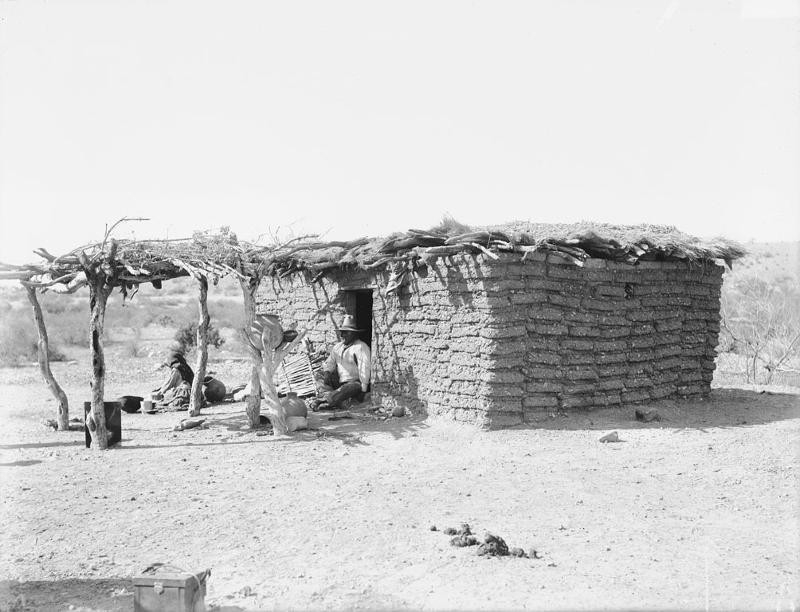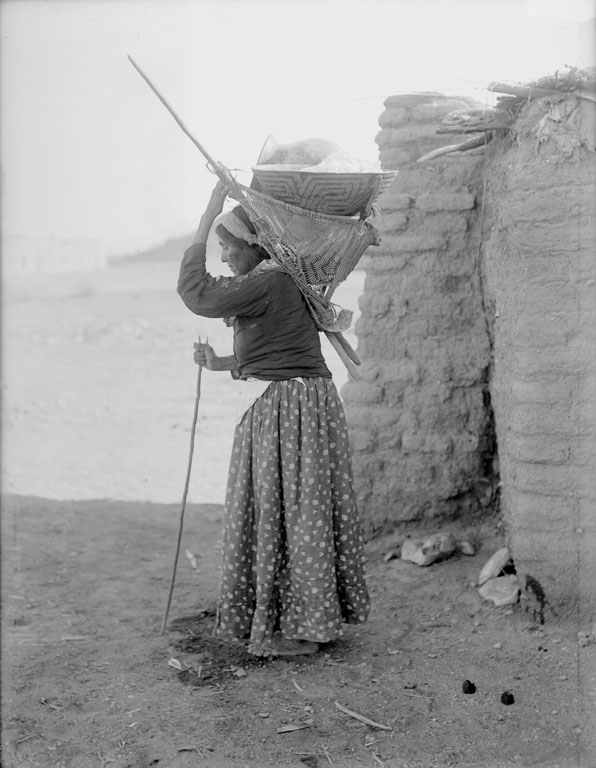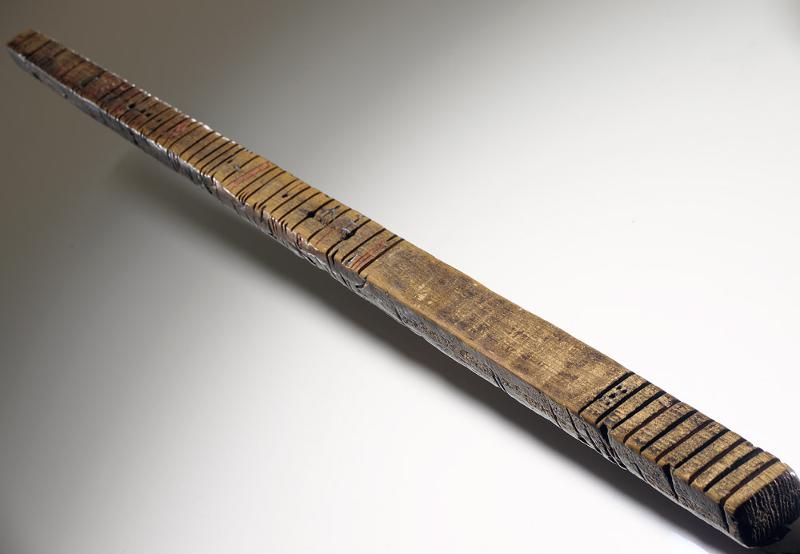Material Culture
|
Adobe brick house with sunshade, 1894 Source - http://sirismm.si.edu/naa/baegn/gn_02785c.jpg |
Prior to the arrival of the Spaniards, O'odham houses were constructed with brush walls and a dry earthen roof. Settlements generally consisted of three to four of these houses, one of which would be occupied by a married couple and the others by the families of their married sons.
|
|
The kia was a cone-shaped carrying frame used by women.This frame was made by fastening a net made of yucca fiber cords to a framework of four poles. It was designed so that it could rest upright on its own while women were loading it and then be placed on women's back for transportation.
|
O'odham with kia, 1894 Source - http://sirismm.si.edu/naa/baegn/gn_02747b.jpg |
|
O'odham cooking shelter, 1894 Source - http://sirismm.si.edu/naa/baegn/gn_02770d.jpg |
These extended family groups would share other facilities, including a brush-enclosed kitchen, storage facilities, and small huts where menstruating women would stay. Adobe style houses were not used by the O'odham until after the arrival of the Spanish (although they had been constructed by the prehistoric Hohokam).
|
|
Calendar sticks were cactus ribs that had been marked with a series of lines, dots, and notches to mark events that had happened in the past. These markings served as mnemonic devices to remind men of important happenings in their history. The oldest sticks in existence go back to 1833, and ethnographic accounts indicate that with the help of the calendar sticks O'odham men could recite the history of their village for 80 or more years.
|
Calendar Stick Source - http://www.nmai.si.edu/exhibitions/infinityofnations/southwest/104878.html) |
Click on next page to continue.



.jpg)
